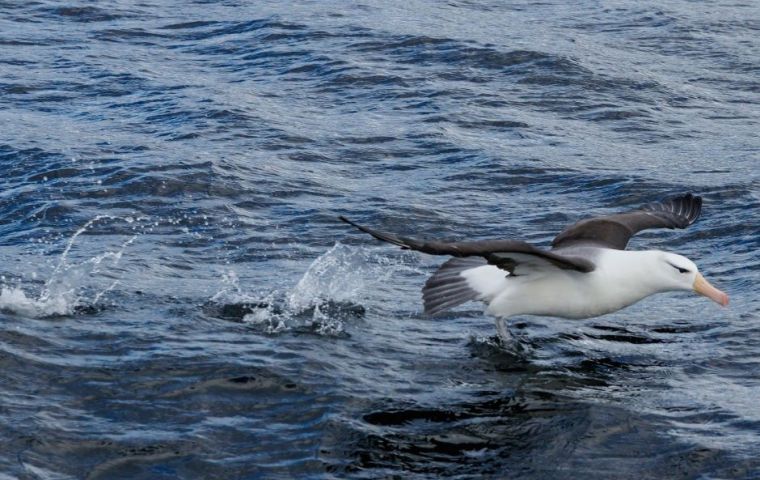MercoPress. South Atlantic News Agency
Drones to census Falklands Albatrosses and Rockhopper penguins
 The Falklands are home to the world’s largest colonies of Black browed Albatrosses and second-largest colonies of Southern Rockhopper Penguins
The Falklands are home to the world’s largest colonies of Black browed Albatrosses and second-largest colonies of Southern Rockhopper Penguins The implementation of drones to monitor large seabird colonies can be as effective as traditional on-the-ground methods while reducing costs, labour, and the risk of human error, a new study has found.
Scientists at Duke University and the Wildlife Conservation Society (WCS) used a deep-learning algorithm to analyze over 10,000 drone images of mixed colonies of seabirds in the Falkland (Malvinas) Islands.
The Falklands are home to the world’s largest colonies of Black-browed Albatrosses and the second-largest colonies of Southern Rockhopper Penguins. Hundreds of thousands of birds breed on the islands in densely interspersed groups.
According to the researchers, the deep-learning algorithm correctly identified and counted the albatrosses with 97% accuracy and the penguins with 87%. The automated counts were within 5% of human counts, about 90% of the time.
“Using drone surveys and deep learning gives us an alternative that is remarkably accurate, less disruptive and significantly easier,” said Madeline C Hayes, a remote-sensing analyst at the Duke University Marine Lab. “One person, or a small team, can do it, and the equipment you need to do it isn’t all that costly or complicated.”
Previously, teams of scientists have been monitoring the colonies, which are located on two rocky, uninhabited outer islands. They count the number of each species they observe on a portion of the islands and extrapolate those numbers to get population estimates for the full colonies.
Because the colonies are large and densely interspersed and the penguins are much smaller than the albatrosses (and, thus, easy to miss), counts often need to be repeated. The presence of scientists can also disrupt the birds’ breeding and nursing behaviours.
To conduct the new surveys, WCS scientists used an off-the-shelf consumer drone to collect over 10,000 individual photos. Hayes then converted these into a large-scale composite visual using image-processing software.
She then analyzed the image using a convolution neural network (CNN), a type of AI that employs a deep-learning algorithm to analyze an image and differentiate and count the objects it 'sees' in it – in this case, two different species of sea birds. The team added together these counts to create comprehensive estimates of the total number of birds found in the colonies.
Johnston, who is also an associate professor of the practice of marine conservation ecology at Duke's Nicholas School of the Environment, said the emerging drone- and CNN-enabled approach is widely applicable “and increases our ability to monitor the size and health of seabird colonies worldwide, and the health of the marine ecosystems they inhabit.” (Bird Guides)




Top Comments
Disclaimer & comment rulesCommenting for this story is now closed.
If you have a Facebook account, become a fan and comment on our Facebook Page!